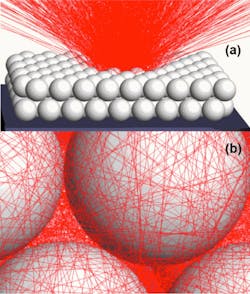Accelerating the Use of 3D Printed Parts
Though 3D printing/additive manufacturing has made huge strides over the past several years, many in industry still see it primarily as a prototyping tool or a means of producing small amounts of non-critical components. Wayne King, leader of the Lawrence Livermore National Laboratory’s Accelerated Certification of Additively Manufactured Metals Project, is looking to change that mindset.
King, along with other researchers from the Laboratory, have published a paper in Applied Physics Reviews entitled “Laser Powder Bed Fusion Additive Manufacturing of Metals; Physics, Computational, and Materials Challenges.” As you can guess from the title, this paper is not meant for a relaxing evening read. Its purpose is clear: to provide substantive, science-based reasoning for greater use of 3D printed metals in industrial applications.
As stated in the paper: “The production of metal parts via laser powder bed fusion additive manufacturing is growing exponentially. However, the transition of this technology from production of prototypes to production of critical parts is hindered by a lack of confidence in the quality of the part. Confidence can be established via a fundamental understanding of the physics of the process. It is generally accepted that this understanding will be increasingly achieved through modeling and simulation. However, there are significant physics, computational, and materials challenges stemming from the broad range of length and time scales and temperature ranges associated with the process. In this paper, we review the current state of the art and describe the challenges that need to be met to achieve the desired fundamental understanding of the physics of the process.”
The models discussed in the paper “allow engineers to calculate the stress and heat generated during manufacturing, to help them understand what happens to the metal during the process … That should allow them to create products that they’re as confident to use in hostile, real-world situations as conventionally manufactured parts. If engineers are convinced, we could see a step-change in the adoption of 3D printing in industries such as aerospace.”
As you’re likely aware, 3D printed parts have been making significant inroads into various industry sectors, including aerospace (see links below), but these instances have been more anecdotal than clear signs of a trend. Thus the reason for King’s paper.
In Lawrence Livermore’s announcement of the paper, King is quoted as saying: “We want to accelerate certification and qualification to take advantage of the flexibility that metal additive manufacturing gives us. Ideally, our plants would like to build a part on Monday that can be qualified and, on the same machine on Tuesday, build a different part that can also be qualified.”
Watch the Lawrence Livermore Laboratory video below illustrating the 3D printing of a curved metal rocket motor throat.
Recent Automation World coverage of industry-related 3D printing advances
- 3D Printing Moves into the Manufacturing Mainstream
- How 3D Printing Will Impact Industrial Automation
- Industrial Scale 3D Printing: A New Approach
- 3D Printing Core to GE’s Newest Advanced Manufacturing Facility
- 3D Printing Advances to Outer Space
- 3D Printing for Safety Critical Industries
- 3D Printing as a Service Bureau Tool for Manufacturers
- 3D Printing and the Future of Food

